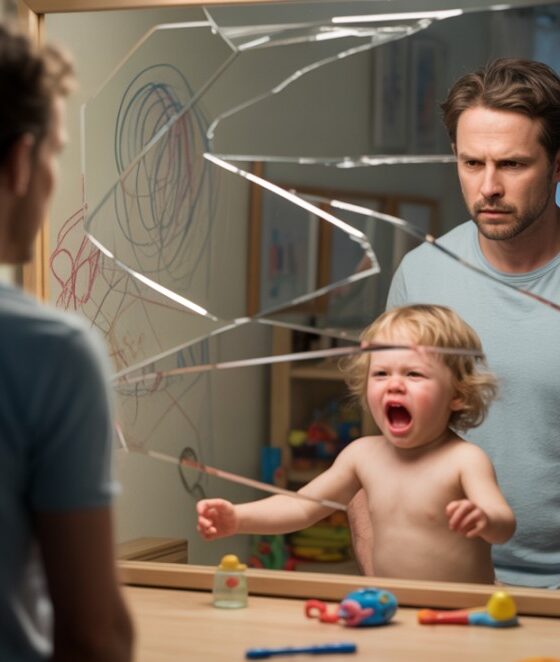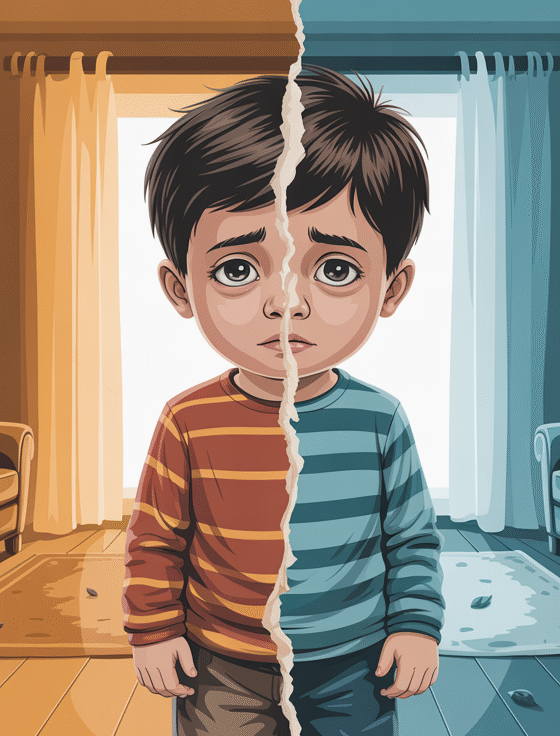What Too Much Screen Time Does to Your Kid’s Brain
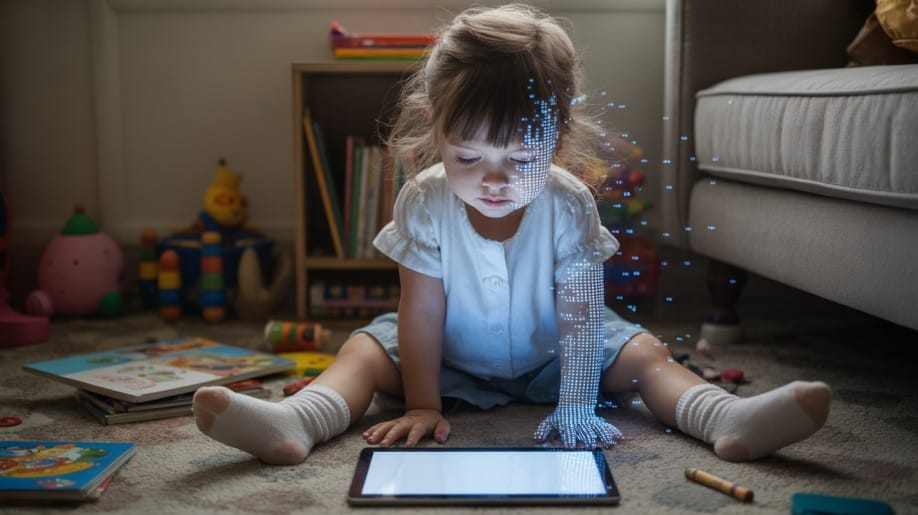
Quick Summary:
This blog helps parents rethink screen time not as a break, but a brain-shaping force. It breaks down the science, shows what’s at stake, and offers simple, guilt-free steps to reclaim your child’s attention, before the algorithm does
The Real Price of Too Much Screen Time
One hour of peace. An entire day of regret.
Letting my son watch TV is the most unfair trade-off we make.
He starts working the drama. I look at my wife, she looks at all the food piled on the counter, and we both know: the chores won’t wait.
So, we give in. One hour of screen time in exchange for one calm kitchen.
But after that?
We don’t get our boy back. We get someone else entirely.
He’s irritable. Impatient. Complaining about things that made him laugh yesterday.
He’s cranky, demanding, wired and tired at the same time.
Still the love of our lives. But different.
Where’s the kid who used to run around emulating “Sonic” style?
Where did that soft voice go? The one who mixed Portuguese with English and said things like “smelando”? (Smelling + cheirando.)
Gone. Swiped away.
You tell yourself it’s just a phase. Just a mood. Just a rough afternoon.
But when “just” becomes the aftermath of every screen time…
you start to wonder:
What is this doing to my child’s brain?
The Science Is In. And It’s Not Great
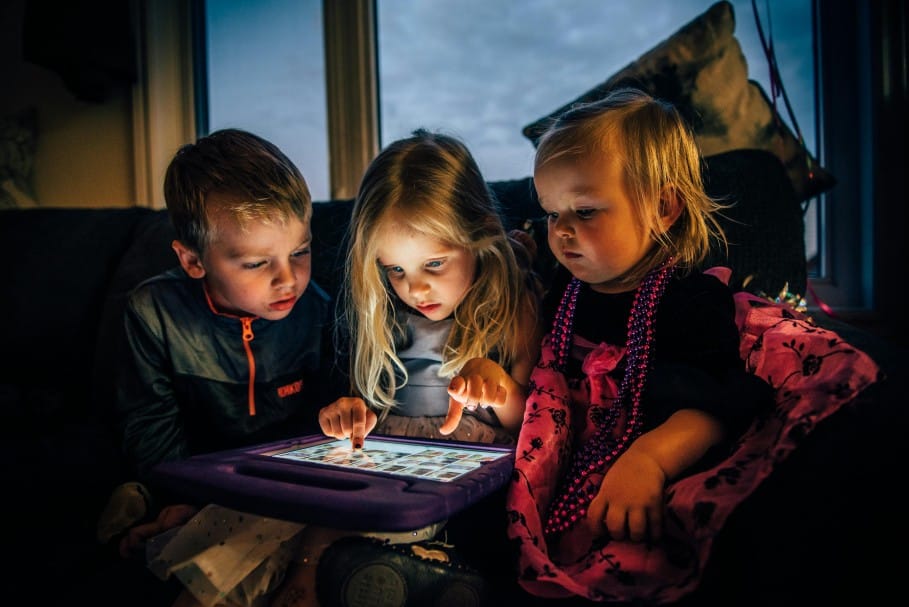
We’re not guessing anymore. We’re not “concerned parents.”
We have data. Peer-reviewed, hard-to-ignore, published-in-medical-journals data.
A 2023 review in the journal Children (PMC10353947) pulled together dozens of studies and found one loud, screen-lit truth:
Too much screen exposure time is messing with kids’ development. And not just in one area. Across the board.
Here’s what the research is showing:
Cognitive Development
When kids spend excessive time in front of screens, especially in early childhood, it impacts the way their brains grow.
Language skills drop. Executive function (the brain’s “boss”) slows down. Academic performance suffers a setback before school even begins.
Emotional Regulation
More screens. More tantrums. More emotional outbursts.
Children who overuse digital devices show increased signs of anxiety, mood swings, and dysregulation. When you remove screen time, they crash, because their brains have been wired to expect constant hits of dopamine.
Physical Health
Too much screen time means too little sleep, less movement, and higher risks of obesity.
Blue light messes with melatonin. Sedentary behaviour becomes the norm. And healthy habits like playing outside, stretching, or even just getting bored, fade away.
This isn’t fear-mongering. It’s not a moral panic.
It’s measurable. Observable. Preventable.
And it all starts with how much (and how often) we hand over our children’s attention to a screen.
What Does Healthy Screen Time Actually Look Like?
Here’s a clear breakdown by age, based on expert guidelines from pediatricians and child development researchers.
Real Life Looks Like This
Your toddler zones out in front of a tablet, then screams like you’ve unplugged their oxygen when it’s time to turn it off.
Your grade-schooler says they need a screen “cool-down” to sleep. (Translation: one more episode. Always one more.)
You realize the only voice you’ve heard lately isn’t theirs. It’s whatever YouTuber they’ve been bingeing.
No wonder they’re skipping outdoor play. Or saying “nah” to physical activity. Why move when gaming consoles hand out dopamine on demand?
But here’s the truth: you’re parenting in a digital storm. And these behaviours? They’re what happen when we don’t limit screen time, because we’re just trying to get through the day.
Long-Term Impact Isn’t Just a Scare Tactic
This isn’t just about mood swings or bedtime meltdowns. It’s deeper and structural.
A major cohort study published in Social Science & Medicine followed children over time and found a disturbing trend: early, excessive child screen exposure time is linked to lower math, language, and attention skills later in life.
But that’s just the start.
Other studies show what overexposure also replaces: physical activity. When screens take over playtime, movement fades. Obesity risk rises. And so does the likelihood of sleep disruption, delayed language, and emotional dysregulation.
These aren’t scare tactics. They’re outcomes we can measure. And manage, if we act early.
When you manage your child’s screen habits, you’re not just fighting for calm dinners or better sleep. You’re helping build the neurological foundation they’ll stand on for life.
Here’s what Radesky & Christakis (2016) said in their Pediatric Clinics of North America review:
“Interactive media have the potential to be highly engaging for children, but digital features can also distract from the learning objectives.”
— Increased Screen Time: Implications for Early Childhood Development and Behavior
How to Reduce Screen Time (Without Starting World War III)
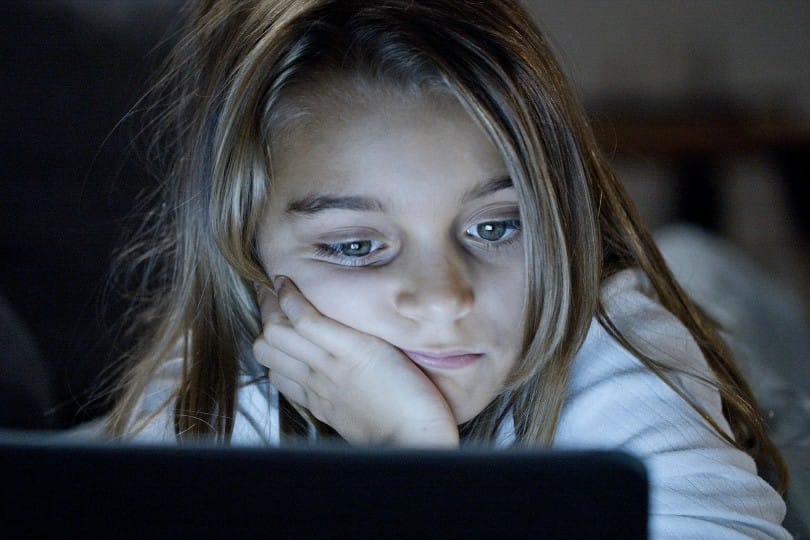
No parent wants a meltdown at 7 PM just because the tablet said goodbye. So, how do you turn off screens without turning your home into a battlefield?
It’s not about banning. It’s about building rituals, rhythms, and realistic limits — based on science, not just survival.
Here’s how to ease the transition, and maybe even make it joyful:
- Know the age rules: For children under 2, screen time should be avoided entirely (except for video calls with Grandma. Those are sacred). For ages 2 to 5, keep it to high-quality content, co-watched, with a clear daily limit.
- Tech-free zones: Create sacred, screenless spaces. The dinner table. Bedrooms. Even the car. These are zones for connection, not cartoons.
- Narrate transitions: Say it out loud. “You’ve got five more minutes, then it’s puzzle time.” A calm countdown works better than a surprise shutdown.
- Respect the hour before bedtime: No screens. No exceptions. This is when melatonin kicks in. A quiet brain makes for deeper sleep (and fewer 2 AM wake-ups).
- Use visual timers: Let them see the time slipping away. It makes the limit feel fair, not random.
- Model the magic: Put your own phone down during meals or stories. They won’t say anything. But they notice everything. This isn’t just a list of parenting hacks. It’s a science-backed, soul-saving shift — one reclaimed hour at a time.
What to Do Instead of Screens
Cutting screen time is just the start. The real shift happens when you fill that space with something better.
Here’s where the magic lives:
- Let them be bored. It’s not a problem. It’s a portal. Boredom forces the brain to imagine, to invent, to explore.
- Read together. It’s a bonding and brain-building. Even ten minutes of storytime can plant ideas that last a lifetime.
- Get outside. Dirt under the nails. Bugs in jars. Sunlight on skin. These beat dopamine and blue light every time.
- Play rough (safely). Wrestling on the rug. Pillow fights. Chase games. What researchers call rough-and-tumble play helps kids regulate emotions, build trust, and release energy the way their brains are wired to.
- Offer real choices: “Want to draw or help me cook?” Autonomy builds confidence. And participation is more fun than passivity.
- Talk to your child. Not at them. With them. Ask questions. Listen to the answers. The more words they hear from you, the less they echo a YouTuber.
- Co-view, smartly. If there’s going to be screen time, sit with them. Ask what they love about it. What made them laugh? What felt weird? Screens can become conversations if we’re present.
Screens Don’t Shape Kids. You Do.
This isn’t about banning screens. It’s about reclaiming your child’s attention before the algorithm claims it first.
Because small choices today shape big outcomes tomorrow.
One habit. One room. One hour at a time.
Not out of guilt. Out of love. Out of clarity.
Because your child’s brain is growing. Let it grow in your presence, not in someone else’s content calendar.
TL;DR
- Screen time affects brain growth, sleep, mood, and learning
- It’s not about zero screens, but mindful use
- Dopamine hits from screens can lead to crashes and tantrums
- Too much screen time replaces movement, play, and language
- Real-life behaviour changes are measurable and reversible
- Limits work better when they’re consistent, not sudden
- You shape your child’s brain more than any device ever will
References
Frequently Asked Questions
For toddlers under 2 years old, experts recommend avoiding digital exposure entirely, except for video chats with family. For children aged 2 to 5, limit media time to one hour of high-quality, co-viewed content per day.
Excessive tablet use in young children can lead to delayed language skills, emotional outbursts, poor sleep quality, and reduced attention span. It also replaces essential activities like outdoor play and face-to-face interaction.
Start by setting consistent limits, using visual timers, and narrating transitions (e.g. “five more minutes”). Offer engaging alternatives like puzzles, drawing, or helping in the kitchen. Consistency and calm routines help reduce pushback
Digital content overstimulates the brain with quick rewards and constant dopamine hits. This can make children irritable, impatient, and prone to emotional crashes once the screen is turned off.
Yes. The blue light from screens interferes with melatonin production, making it harder for children to wind down. Avoid media time at least one hour before bedtime for better sleep.
Try outdoor play, shared reading, building with blocks, creative play, or cooking together. These activities build motor skills, imagination, and emotional regulation, without the side effects of constant screen use.




